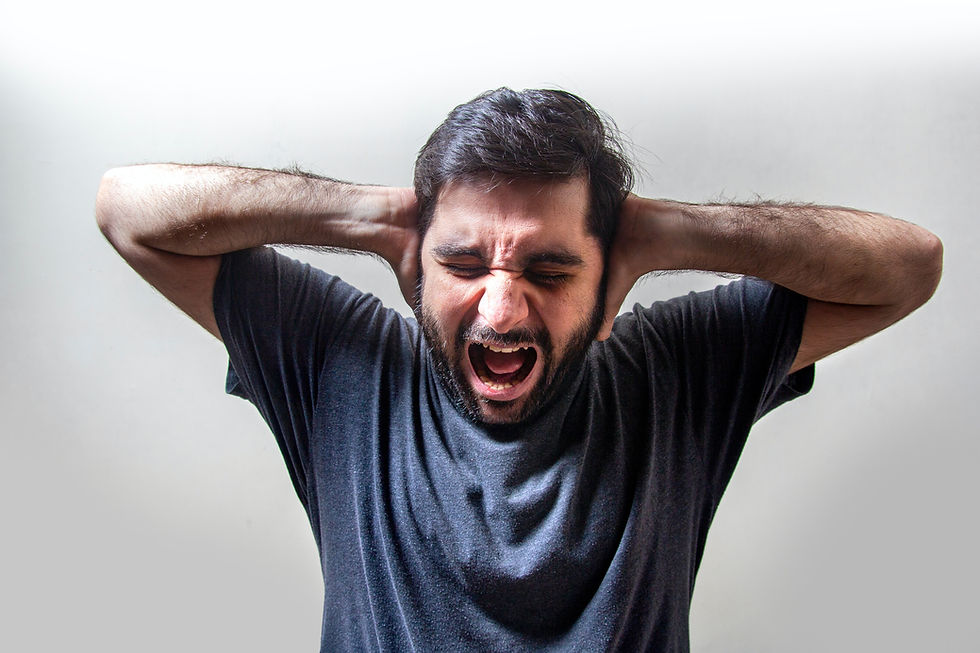
Feeling Dizzy? PT can help!
- Jenny Lennon

- Nov 11, 2022
- 3 min read
Updated: Aug 19, 2023

When most people hear of physical therapy (PT), they think of rehabilitation of muscles/tendons/joints/etc. But did you know that physical therapists can also help treat certain types of dizziness? Two of the most common causes of dizziness we see in the clinic are cervicogenic dizziness and inner ear dizziness (the latter of which is also known as benign paroxysmal positional vertigo, BPPV for short). Let’s take a closer look at the description of these conditions, common signs and symptoms, and what to expect from a PT assessment and treatment.
Cervicogenic dizziness signs and symptoms:
Cervicogenic dizziness is dizziness originating from neck (i.e. cervical) dysfunction. It is often caused by postural positioning and weakness/mobility restrictions in the upper head and neck. People who suffer from cervicogenic dizziness might experience:
Neck pain and/or stiffness
Headaches
Poor balance
Feeling unsteady
Dizziness that lasts several minutes to hours
PT assessment:
Neck range of motion (i.e. how well you can actively or passively move your neck in all directions)
Cervical spinal accessory movement (i.e. how well the joints in your neck move/glide)
Palpation of neck and head muscles to look for tender areas (aka trigger points) or areas of myofascial restrictions (decreased soft tissue flexibility)
Vestibular (inner ear) testing to rule out other potential causes of dizziness

PT treatment:
Physical therapy interventions should always be performed on an individual basis based on what the patient needs. However, with cervicogenic dizziness, we commonly utilize a combination of manual techniques and therapeutic exercise to address the patient’s symptoms and treat the main cause. Manual interventions might include soft tissue and/or joint mobilization to improve musculoskeletal mobility. The exercises prescribed often include stretches to further aid neck mobility as well as strengthening exercises for the deep neck flexors to assist with postural endurance.
BPPV signs and symptoms:
Benign paroxysmal positional vertigo (aka BPPV) is vertigo that arises from problems in the inner ear. There are tiny crystals of calcium carbonate, known as otoconia, that normally reside in little pouches in your inner ear. These crystals help orient you to space and help you know where your head is located in relation to gravity. Sometimes, these crystals can get out of place and move into the semicircular canals of your inner ear. If this happens, the crystals will start rolling around when you move your head in certain directions, thus causing dizziness.

-Graphic from Clevelandclinic.org
Although there are different subtypes of BPPV, the most common type of BPPV is associated with the following signs and symptoms:
Dizziness (often described as the room spinning)
Onset of symptoms often predictable with certain position changes (ex. Turning over in bed, looking down to tie your shoes, etc.)
Symptoms typically arise within 5-10 sec of position change and last less than 1 minute.
PT assessment and treatment:
To assess for BPPV, your physical therapist will take you through a series of positional head/neck movements and note any reproduction of symptoms. In addition to monitoring the symptoms the patient describes, the PT will also be looking closely at the patient’s eye movements. If the dizziness is due to BPPV, the patient’s eyes will move repetitively in a certain direction (called nystagmus).
If the symptoms are reproduced and nystagmus is present, the PT will often initiate treatment directly from the testing position. Treatment involves taking the patient through another series of movements with the goal of returning the otoconia back to where they belong. If the symptoms are solely due to BPPV, the dizziness should resolve within 1-3 treatment sessions.

In summary, there are many potential causes of dizziness, but two of the most common types are cervicogenic dizziness and BPPV. A physical therapist with vestibular training can help differentiate the root cause of your individual dizziness symptoms and develop a personalized treatment plan for you!




Comments